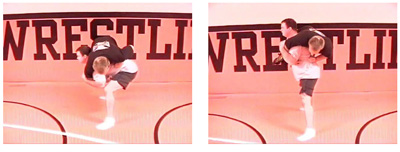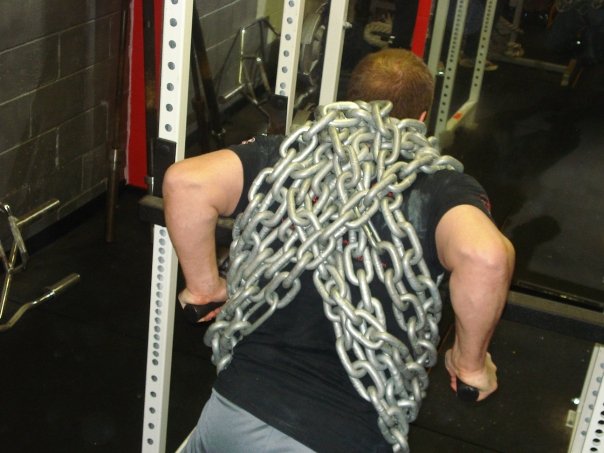Sandbags

What They and How are They Used:
Sandbags fit all the criteria of being an odd object. There are several ways to prepare a sandbag to use in a gym or for an outside training session.
For years we have used an army duffle bag that we purchased on ebay. It has held up very well. Now you don’t want to jump dump the sand into the bag directly. You need to put some kind of liner to put the sand in prior to putting it into the bag.
To line a sandbag you can use:
- contractor bags (30 gallon, thick black plastic bags)
- nylon woven bags (used to haul feed for animals on farms)
- other nylon duffle bags
- prefab liners made by sandbag manufacturers specifically to load sandbags
You can fill a sandbag with:
- sand
- pea gravel
- dirt
I prefer pea gravel because it is cleaner and can be easily used within a commercial gym setting.
Typically, the “liners” that you put into the sandbag are broken into smaller increments. For example, if you are making a 100 lb sandbag, you would fill it with 4 x 25 lb fillers.
What has worked for me is to take the 25lb bags of play sand from Walmart and keep them in their plastic bags. Take the duct tape and duct tape around the entire plastic bag. Now you have 4 x 25 lb duct tape packages that you can incrementally fill your sandbag with.
Now, when you use the liners above to contain the sand within the sandbag, they will spring “leaks”. So it is a good idea to use duct tape to seal these cracks.

Every exercise you can think of, you can do with a sandbag, so get creative. And because you will only be utilizing one implement, you can easily transition from one exercise to the other for a great strength training circuit.
6 Week Kettlebell / Sandbag Workout
Sandbag Press

Sandbag Zercher Lunge

Quick Sandbag Workout
1) Sandbag Clean and Press, 3×6
2) Sandbag Clean and Squat, 4×8
3) Sandbag Floor Press, 4×8
4) Sandbag Good Morning, 3×12
2) Sandbag Clean and Squat, 4×8
3) Sandbag Floor Press, 4×8
4) Sandbag Good Morning, 3×12
Water / Sand Kegs

What They and How are They Used:
Water filled odd objects are among the most unstable implements you can use. Because of the shifting of the water and ever changing redistribution of mass, the lifter must constantly and powerfully change their tension to overcome and impart movement into the object.
A typically half keg when filled with water will weigh any where from 145-155lbs. So you can interpolate then that the weight of a half filled keg would be around 75-85lbs.
There are two types of kegs:
- old barrel style with no handles
- sanke keg with handles
How to fill kegs:
Old Barrel Keg – drill out the old cork plug in the side of the barrel and fill accordingly. Then replace with a rubber stopper from McMaster-Carr.
Sanke Keg - can be disassembled by using this technique
Kegs can be filled with:
- water
- sand
- dirt
- pea gravel
Most Popular Keg Exercises
- shoulder lunges
- zercher lunges
- clean & press
- bearhug good mornings
- military press
- pull throughs
- shoulder squats
- zercher squats
- loading onto platform
Keg Clean & Press


Keg Bearhug Good Morning


Water Filled Swiss Ball

What They and How are They Used:
A anti-burst swiss ball is filled with water and resealed. Similar to a water filled keg, water filled swiss balls have a more intense grip component to all their lifts. The lifter must aggressively grab the swiss ball to maintain control of the lift.
The swiss ball is typically filled between 50 and 75% capacity.
Typical movements executed with a water filled swiss ball:
- bear hug squats
- bear hug lunges
- bear hug good mornings
- curl to press
Photo courtesy of Ross Enamait:

Slosh Pipe
What They and How are They Used:
A sloshpipe is a device developed by Dan John. A 10′ length of 4″ PVC pipe is filled to approximately 50-75% capacity and capped on the ends with end caps. Glue or duct tape is added to ensure there is minimal leakage.
As the sloshpipe is lifted the water “sloshes” from side to side and the lifter will have to adjust and counteract these shifts.
Typical movements done with a slosh pipe:
- overhead walks
- overhead pressing
- zercher squats
- zercher walks
Elastic Bands

What They and How are They Used:
Heavy elastic bands can be used as an odd object. They can provide external resistance that is in opposite to or counteractive to the plane of movement – see Chaos Manual.
Elastic bands can be used:
- to hang kettlebells from a barbell, this technique is called “crazy” or “chaos” bells. A lifter can do chaos curls, chaos bench or chaos shrugs.
- to loop around a lifter to add a line of tension unrelated to their engaged exercise. For example, to increase the benefits of a simple push-up a partner can add a lateral force to the lifter with an elastic band causing a more intensive bracing (abdominals) component to the lift – see Chaos Manual.
Partner Assisted Bodyweight Training

What They and How are They Used:
Partner assisted bodyweight movement are where a lifter “picks up” a partner and uses their bodyweight as the resistance for the exercise.
Because the partner’s bodyweight is non-rigid and asymmetrical, we can classify it as a odd object. This type of training has become popular recently due to the rise in popularity of the UFC, but it has been used for decades as a means to develop wrestlers, old strongmen and combat athletes.

Typical movements done with a partner assisted bodyweight movements:
- lifts
- zercher carries
- zercher triple extensions
- shoulder carries
- underarm (fireman) drags
Zercher Squats (see Blunt Force Trauma)

Bodyweight Good Mornings (see Blunt Force Trauma)

Chains

What They and How are They Used:
Chains are typically used by powerlifters to provide instability and accomodating resistance to their training. Overcoming the chains requires brute force. The chains are added to the bench press, squat and deadlift. The standard size chain used by powerlifters is typically 5/8 chain.
Chains with Squats – chains are added with a leader chain and hung so that in the bottom of the squat the chains gather on the ground (lightening the load) and come off the ground at lockout (increasing the load) – this is called accomodating resistance.
Chains with Bench Press – chains are added the same way as with the squat just with a shorter lead chain because the movement itself is shorter.
Chains with Deadlift – the chains can be added two ways. Either is the center of the bar where a carabeener is used to loop the chain completely around the bar. The chains are bunched up and placed between the lifter’s hands in the middle of the bar. This is the first setup. The second way chains are added is outside of the plates at the end of the bar. This setup sometimes has issues with the lifter setting the plates down onto the chains as they kick in during the lift.
But chains can also be used as an odd object.
We take the 5/8″ chains and attached them to a “D” handle with the carabeener. With this setup you can hit:
- bench press
- tricep extension
- floor press
- curls
- curl to military press
- bent over rows
- high pulls
- farmers walks
- and a variety of other movements
Because the chains are unstable and move throughout the movement, we can classify them as odd objects.
Chains can be added to:
- barbells, as with conventional training (bench, squat, deadlift)
- barbells, for other movements; military press, bent over rows, shrugs, etc.
- various handles; “D” handle, “V” handle, thick grip handles
- towels; wrap a towel through the chain and lift
- kettlebells (as seen in the video below)
- bodyweight movements like dips, pull-ups, inverted rows, step-ups, etc.
Dips with Chains

Step-ups with Chains

Here is a video example of how to use chains as odd objects.

Комментариев нет:
Отправить комментарий